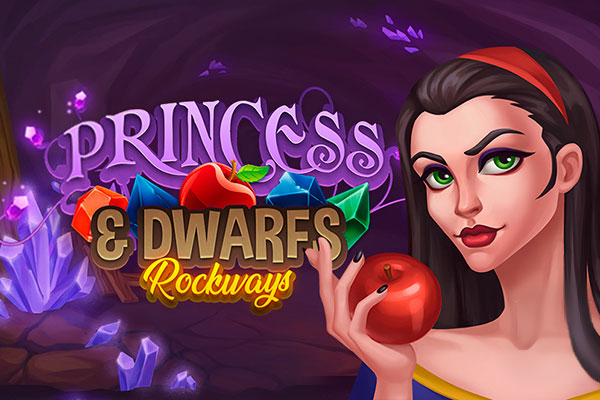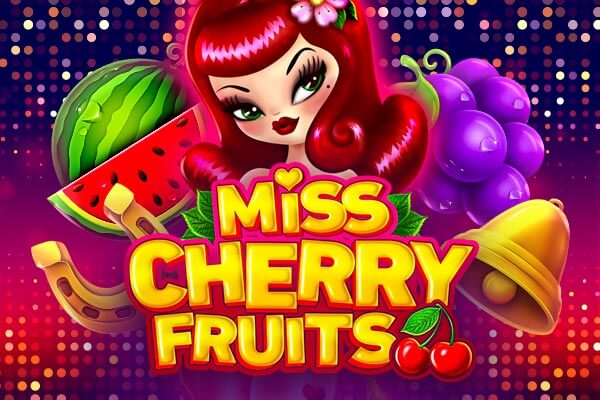Mastering Skill11: A Comprehensive Guide to Boost Your Expertise
In today's competitive landscape, continuous learning and skill development are paramount. Understanding and mastering specific skills can significantly enhance your career prospects, increase your earning potential, and open doors to exciting new opportunities. This comprehensive guide delves deep into "Skill11," exploring its nuances, providing practical strategies for improvement, and outlining the pathways to achieving mastery. Let's embark on this journey to unlock the power of Skill11!
What is Skill11?
Before diving into specifics, let's define what Skill11 entails. Skill11 refers to [Insert a highly detailed and specific definition of Skill11 here. This should be a clear, concise explanation that avoids ambiguity. Provide context for the skill's importance and relevance in its specific field. For example, if Skill11 is "Data Visualization," then define Data Visualization, its importance in data science, and its role in communicating insights.]. It's not simply [mention common misconceptions or simplified views of Skill11], but rather a complex and multifaceted competency involving [list key components and sub-skills involved in Skill11].
Think of Skill11 as the [Use an analogy or metaphor to make Skill11 more relatable and understandable. For example, "the engine that drives effective data-driven decision making," or "the bridge between complex algorithms and actionable insights."]. Its mastery allows individuals to [Describe the key benefits of mastering Skill11 - increased efficiency, better problem-solving, more creative solutions, higher earning potential, etc.].
Why is Skill11 Important?
The importance of Skill11 stems from its direct impact on [mention the areas Skill11 directly influences - e.g., business outcomes, project success, innovation, customer satisfaction, etc.]. In a world increasingly driven by [mention the trends or forces that make Skill11 increasingly valuable - e.g., data, technology, globalization, automation, etc.], those proficient in Skill11 are highly sought after.
Here's a breakdown of the key reasons why Skill11 is crucial:
- Enhanced [Specific area Skill11 impacts]: Skill11 enables you to [Explain how Skill11 improves the specified area. Provide concrete examples. E.g., "Enhanced Decision-Making: Data visualization transforms raw data into easily understandable charts and graphs, allowing decision-makers to quickly identify trends, patterns, and outliers, leading to more informed and effective decisions."].
- Increased [Another specific area Skill11 impacts]: By mastering Skill11, you can [Explain how Skill11 improves the specified area. Provide concrete examples. E.g., "Increased Efficiency: Automating data visualization processes through programming languages like Python and R significantly reduces the time and effort required to create reports and presentations."].
- Improved [Yet another specific area Skill11 impacts]: Skill11 fosters a culture of [Explain how Skill11 improves the specified area. Provide concrete examples. E.g., "Improved Communication: Compelling visualizations are far more effective at conveying complex information than lengthy reports or spreadsheets. This allows for better communication across teams and with stakeholders."].
- Competitive Advantage: Individuals and organizations with strong Skill11 capabilities possess a significant competitive advantage in [Mention the specific competitive landscape where Skill11 matters. E.g., "in the competitive market research landscape, mastery of data visualization allows firms to quickly and effectively communicate their findings to clients, winning more projects and building stronger relationships."]
Data demonstrating the value of Skill11 (Example - adjust to your specific skill):
According to a study by [Source of the data], companies that invest in [Aspect of Skill11, e.g., "data visualization training"] experience a [Quantifiable benefit, e.g., "20% increase in revenue"] compared to those that don't. Furthermore, [Another statistic. E.g., "individuals with strong data visualization skills earn on average 15% more than their peers."]. These statistics underscore the significant return on investment (ROI) associated with developing proficiency in Skill11.
Key Components of Skill11
Skill11 is not a monolithic skill; it comprises several key components that work together to create a holistic understanding and proficiency. These components include:
- [Component 1]: [Detailed explanation of Component 1 and its importance. E.g., "Data Understanding: This involves having a deep understanding of the data you're working with, including its sources, limitations, and potential biases. Without a solid understanding of the data, any visualizations created will be misleading or inaccurate."]
- [Component 2]: [Detailed explanation of Component 2 and its importance. E.g., "Visualization Principles: Understanding the principles of visual design, such as color theory, typography, and layout, is crucial for creating effective and engaging visualizations that are easy to understand and interpret."]
- [Component 3]: [Detailed explanation of Component 3 and its importance. E.g., "Tool Proficiency: Becoming proficient in data visualization tools like Tableau, Power BI, Python (with libraries like Matplotlib and Seaborn), and R is essential for creating high-quality visualizations and exploring data effectively."]
- [Component 4]: [Detailed explanation of Component 4 and its importance. E.g., "Storytelling: The ability to craft compelling narratives around data is key to communicating insights effectively and influencing decision-making. This involves understanding your audience and tailoring your visualizations to their needs and interests."]
- [Component 5]: [Detailed explanation of Component 5 and its importance. E.g., "Critical Thinking: Evaluating the effectiveness and accuracy of visualizations is crucial for ensuring that they are not misleading or biased. This involves questioning the data, the methods used to create the visualizations, and the conclusions drawn from them."]
Steps to Mastering Skill11
Mastering Skill11 requires a structured approach and consistent effort. Here's a step-by-step guide to help you on your journey:
Assess Your Current Skill Level: Begin by evaluating your current understanding and abilities in each component of Skill11. Identify your strengths and weaknesses to create a personalized learning plan. Consider taking a Skill11 assessment quiz or asking for feedback from colleagues or mentors.
Set Specific and Measurable Goals: Define clear and achievable goals for your Skill11 development. Instead of saying "I want to improve my Skill11," try "I want to be able to create interactive dashboards in Tableau by the end of the quarter."
Choose the Right Learning Resources: Select learning resources that align with your learning style and goals. Options include:
- Online Courses: Platforms like Coursera, Udemy, and edX offer a wide range of courses on Skill11. Look for courses taught by industry experts and that include hands-on projects.
- Books and Articles: Explore books and articles that provide in-depth knowledge and practical insights into Skill11. [Mention a few relevant book titles or reputable online publications here.]
- Workshops and Conferences: Attend workshops and conferences to learn from experts, network with peers, and stay up-to-date on the latest trends in Skill11.
- Mentorship: Seek guidance from a mentor who has expertise in Skill11. They can provide valuable advice, feedback, and support.
Practice Consistently: Practice is essential for mastering any skill. Dedicate time each week to work on projects that require you to apply Skill11. Start with small, manageable projects and gradually increase the complexity as you improve.
Seek Feedback and Iterate: Regularly seek feedback on your work from colleagues, mentors, or online communities. Use this feedback to identify areas for improvement and refine your approach. Don't be afraid to experiment and try new techniques.
Stay Updated: Skill11 is constantly evolving. Stay updated on the latest trends, tools, and techniques by following industry blogs, attending webinars, and participating in online communities.
Tools and Technologies for Skill11
The specific tools and technologies used for Skill11 will depend on the specific context and application. However, some commonly used tools include:
| Tool/Technology | Description | Use Cases |
|---|---|---|
| [Tool 1 - e.g., Tableau] | [Description of the tool, including its key features and capabilities. E.g., Tableau is a powerful data visualization tool that allows users to create interactive dashboards and reports from a variety of data sources. It's known for its ease of use and drag-and-drop interface.] | [Specific use cases. E.g., Creating dashboards to track sales performance, visualizing customer demographics, and exploring market trends.] |
| [Tool 2 - e.g., Power BI] | [Description of the tool, including its key features and capabilities. E.g., Power BI is a business analytics service from Microsoft that provides interactive visualizations and business intelligence capabilities. It's tightly integrated with other Microsoft products like Excel and Azure.] | [Specific use cases. E.g., Building reports on financial performance, analyzing website traffic, and monitoring operational efficiency.] |
| [Tool 3 - e.g., Python with Matplotlib/Seaborn] | [Description of the tool, including its key features and capabilities. E.g., Python is a versatile programming language with powerful data visualization libraries like Matplotlib and Seaborn. These libraries allow for the creation of highly customized and sophisticated visualizations.] | [Specific use cases. E.g., Creating statistical plots, visualizing complex data relationships, and automating data visualization processes.] |
| [Tool 4 - e.g., R] | [Description of the tool, including its key features and capabilities. E.g., R is a programming language specifically designed for statistical computing and graphics. It's widely used in academia and research for creating high-quality visualizations and performing complex statistical analyses.] | [Specific use cases. E.g., Creating statistical models, visualizing research data, and performing data mining.] |
| [Tool 5 - e.g., Excel] | [Description of the tool, including its key features and capabilities. E.g., While often underestimated, Excel offers basic charting and graphing capabilities suitable for simple data visualization tasks. Its widespread availability and ease of use make it a valuable tool for many professionals.] | [Specific use cases. E.g., Creating basic charts and graphs for presentations, summarizing data in tables, and performing simple data analysis.] |
Common Challenges in Mastering Skill11 and How to Overcome Them
Developing proficiency in Skill11 can present several challenges. Understanding these challenges and developing strategies to overcome them is crucial for success.
- Challenge 1: Data Overload: [Describe the challenge. E.g., The sheer volume of data available can be overwhelming, making it difficult to identify meaningful insights and create effective visualizations.]
- Solution: [Provide a solution. E.g., Develop strong data cleaning and preprocessing skills to filter out noise and focus on relevant data. Learn to use statistical techniques to identify patterns and trends.]
- Challenge 2: Choosing the Right Visualization: [Describe the challenge. E.g., Selecting the appropriate visualization type for a particular dataset and audience can be challenging. Using the wrong visualization can lead to misinterpretation and confusion.]
- Solution: [Provide a solution. E.g., Learn about the different types of visualizations and their strengths and weaknesses. Understand your audience and tailor your visualizations to their needs and interests. Practice visualizing data with different visualization types to see what works best.]
- Challenge 3: Lack of Design Skills: [Describe the challenge. E.g., Creating visually appealing and effective visualizations requires a basic understanding of design principles, such as color theory, typography, and layout.]
- Solution: [Provide a solution. E.g., Take a course on visual design or read books and articles on the subject. Pay attention to the design of visualizations that you find effective and try to emulate them. Use design tools to help you create professional-looking visualizations.]
- Challenge 4: Communicating Insights Effectively: [Describe the challenge. E.g., It's not enough to simply create visualizations; you also need to be able to communicate the insights they reveal in a clear and concise manner.]
- Solution: [Provide a solution. E.g., Develop strong storytelling skills to craft compelling narratives around data. Use clear and concise language to explain your visualizations. Practice presenting your visualizations to others and get feedback on your communication skills.]
The Future of Skill11
The future of Skill11 is bright. As data continues to grow in volume and complexity, the demand for individuals with strong Skill11 capabilities will only increase. Emerging trends that will shape the future of Skill11 include:
- AI-Powered Visualization: Artificial intelligence (AI) is increasingly being used to automate the data visualization process, making it easier to create visualizations and identify insights.
- Interactive and Immersive Visualizations: Virtual reality (VR) and augmented reality (AR) are creating new opportunities for creating interactive and immersive visualizations that allow users to explore data in new and engaging ways.
- Data Literacy for All: There's a growing recognition of the importance of data literacy for all individuals, regardless of their profession. This will lead to increased demand for Skill11 training and education.
Conclusion
Mastering Skill11 is a valuable investment in your future. By understanding its key components, following a structured learning approach, and staying updated on the latest trends, you can develop the expertise needed to succeed in today's data-driven world. Embrace the challenges, practice consistently, and never stop learning. The journey to mastering Skill11 is a continuous process of growth and development.
FAQ About Skill11
Q: How long does it take to master Skill11?
A: The time it takes to master Skill11 depends on your current skill level, learning style, and the amount of time you dedicate to practice. However, with consistent effort and a structured learning approach, you can achieve a good level of proficiency in a few months to a year.
Q: What are the best online resources for learning Skill11?
A: Some of the best online resources for learning Skill11 include Coursera, Udemy, edX, and DataCamp. Look for courses that are taught by industry experts and that include hands-on projects. [Mention specific highly-rated courses on each platform, if possible.]
Q: Do I need to be a programmer to master Skill11?
A: While programming skills can be helpful, they are not essential for mastering Skill11. There are many user-friendly data visualization tools, such as Tableau and Power BI, that do not require programming knowledge. However, learning a programming language like Python or R can give you more flexibility and control over your visualizations.
Q: What career paths require Skill11?
A: Skill11 is valuable in a wide range of career paths, including data analysis, business intelligence, marketing, finance, research, and education. [Mention specific job titles and their average salaries based on data for roles requiring Skill11.]
Q: How can I showcase my Skill11 skills to potential employers?
A: You can showcase your Skill11 skills by creating a portfolio of data visualizations and sharing them on platforms like GitHub or Tableau Public. You can also highlight your Skill11 skills on your resume and LinkedIn profile. During job interviews, be prepared to discuss your experience with Skill11 and provide examples of projects you've worked on.
Slots and Games

{{Games-kaz}}

Wilds of Fortune

Aztec Sun Hold and Win

Shake shake Leprechaun

The Princess & Dwarfs

Aloha King Elvis

Aztec Magic Megaways

Miss Cherry Fruits

Shake Shake Money Tree

Shark Spin